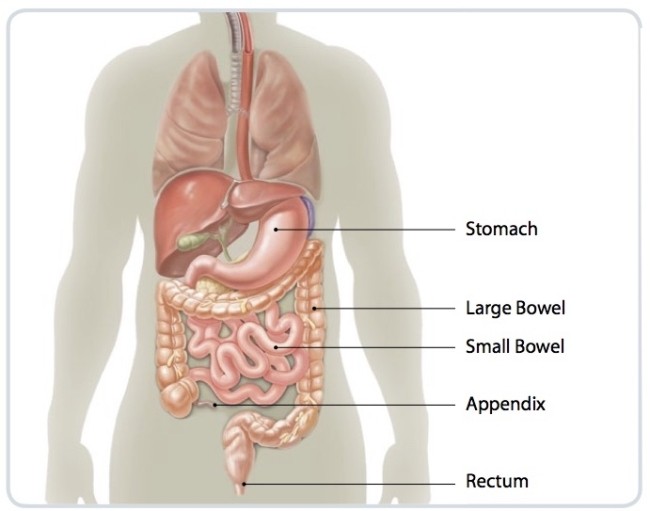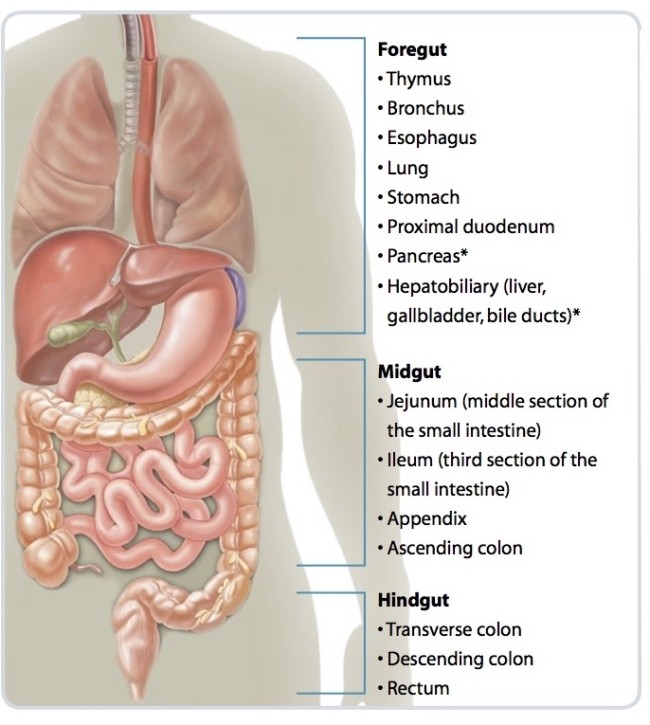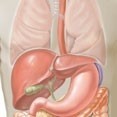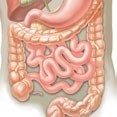GASTROINTESTINAL TRACT
Sites Where Gastrointestinal (GI) Neuroendocrine Tumours Can Occur:

Gastrointestinal NETs are the most prevalent group of NETs.

* The pancreas, liver and gallbladder are not considered to be part of the gastrointestinal tract but are classified as accessory organs of digestion.
However, gastrointestinal and pancreatic neuroendocrine NETs are often referred to together and are called gastroenteropancreatic or GEP NETs.
Gastrointestinal NETs can include:
Tumour Type
Gastrioma†
Associated Symptoms
(Zollinger-Ellison syndrome) Symptoms are related to increased levels of gastrin (stomach acid): peptic ulcers, stomach pain or bleeding, severe heartburn, vomiting, weight loss, severe diarrhea and fatty stool, low red blood cell count.
† If you are being evaluated for a suspected gastrinoma, it is essential that you do not take proton pump inhibitor (PPIs) medications at the same time. PPIs will cause gastrin and chromogranin A levels to be falsely elevated and, therefore, many doctors recommend that PPI therapy be discontinued prior to testing. Before undergoing any tests, ask your doctor for explicit instructions on when to stop taking this medication.
Tumour Type
Neurotensinoma
Associated Symptoms
The effects of elevated levels of the peptide neurotensin in patients with NETs are poorly understood. Symptoms such as severe watery diarrhea, diabetes, low levels of potassium in the blood, low levels of stomach acid and weight loss make it virtually indistinguishable from the VIPoma syndrome. Other symptoms may include swelling, low blood pressure and flushing.
Tumour Type
Serotonin producing NETs (carcinoids)
Associated Symptoms
Symptoms are typical of the carcinoid syndrome – facial flushing, diarrhea, intermittent abdominal pain, asthma, heart palpitations or right-sided heart failure. Some patients may also experience watering eyes and increased nasal secretions.
Tumour Type
Goblet Cell
Associated Symptoms
Since goblet cell NETs occur almost exclusively in the appendix, the typical presentation is acute appendicitis, with symptoms such as abdominal pain and swelling, loss of appetite, nausea and vomiting, constipation or diarrhea, and/or fever. Other, less common signs can include bowel obstruction, GI bleeding, inflamed lymph nodes in the abdomen or iron deficiency anemia.‡
‡ The classification of Goblet Cell Carcinoma (GCC) as a NET is controversial, due to the fact that this type of tumour shares cellular features of both a NET and an adenocarcinoma. It is recommended that GCC tumours be meticulously examined by a pathologist to determine the best course of treatment and prognosis.


